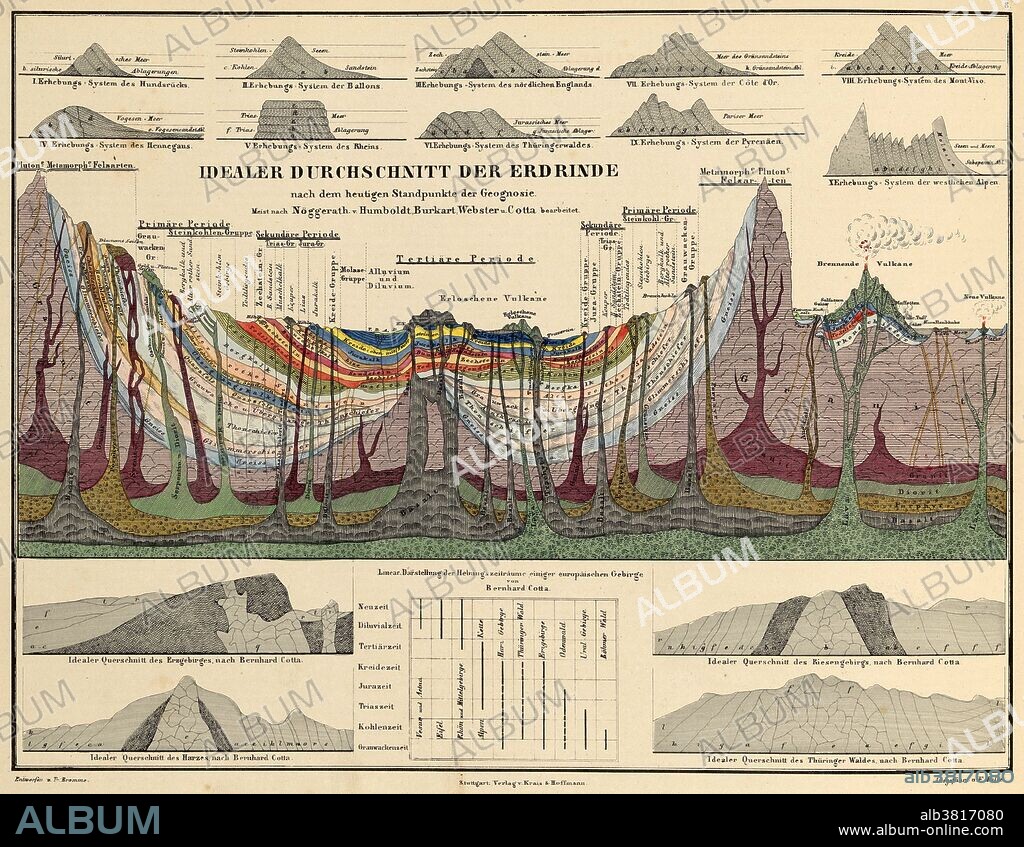alb3817080
Composition of the Earth's Crust, Humboldt, 1845

|
Add to another lightbox |
|
Add to another lightbox |



Buy this image.
Select the use:

Title:
Composition of the Earth's Crust, Humboldt, 1845
Caption:
A plate from the atlas of Alexander von Humboldt's Kosmos, illustrating the composition of the Earth's crust via color-coding. Between 1799 and 1804, Prussian geographer, naturalist and explorer Alexander von Humboldt (1769-1859) travelled extensively in Latin America, exploring and describing it for the first time in a manner generally considered to be a modern scientific point of view. His quantitative work on botanical geography laid the foundation for the field of biogeography. Humboldt's description of the journey was written up and published in an enormous set of volumes over 21 years. He was one of the first to propose that the lands bordering the Atlantic Ocean were once joined (South America and Africa in particular). Later, his five-volume work, Kosmos (1845), attempted to unify the various branches of scientific knowledge. He thought an approach to science was needed that could account for the harmony of nature among the diversity of the physical world.
Credit:
Album / Science Source / Wellcome Images
Releases:
Model: No - Property: No
Rights questions?
Rights questions?
Image size:
5260 x 4077 px | 61.4 MB
Print size:
44.5 x 34.5 cm | 17.5 x 13.6 in (300 dpi)
Keywords:
19TH CENTURY • ALEXANDER VON HUMBOLDT • ART • ARTWORK • ATLAS • BIOGEOGRAPHY • COLOR CODED • COLOR CODING • COLOR-CODED • COLOR-CODING • COMPOSITION • CROSS SECTION • CRUST • DRAWING • EARTH'S CRUST • FRIEDRICH WILHELM HEINRICH ALEXANDER VON HUMBOLDT • GEOGRAPHY • GEOLOGIA • GEOLOGY • HISTORIC • HISTORICAL • HISTORY • HUMBOLDT • ILLUSTRATION • ILLUSTRATIONS • KOSMOS • MAP • MOUNT • MOUNTAIN • NATURAL SCIENCE • SIDE ELEVATION • VOLCANO • VON HUMBOLDT • VULCAN • VULCANO
 Pinterest
Pinterest Twitter
Twitter Facebook
Facebook Copy link
Copy link Email
Email
